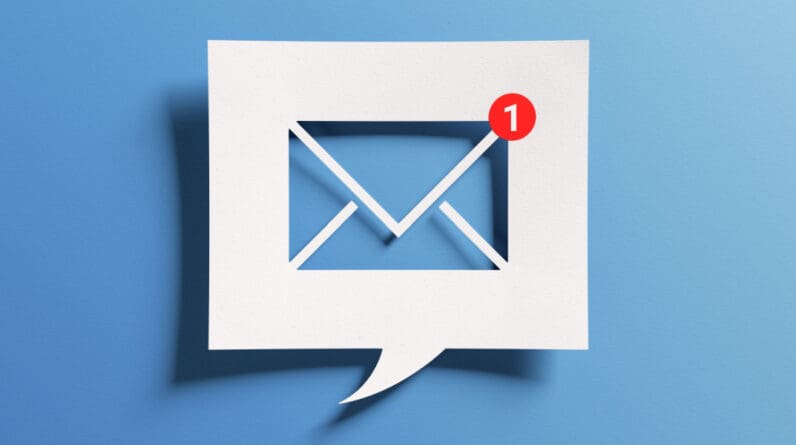
Learning how to write a top-notch sales email isn’t easy. Recipients receive an average of 120 new emails every day, but they only choose to respond to about 25% of them.
That statistic might discourage some senders, but only those who view the glass as half empty. 25% of emails are getting responses, and that means yours could be one of them—so long as you learn how to write sales emails that work.
Sure, it means that three of every four emails don’t get opened, but that also gives you a one-in-four chance of getting seen.
Fortunately, you’ve come to the right place.
We’ll show you how to write sales emails that don’t flop. You’ll learn the key characteristics of good sales emails, and we’ll even walk you through a few real-life sales email examples.
Ready for more opens, clicks, and responses? Let’s start writing.
3 E’s of Writing Your Perfect Email
Before we dive into how to write a sales email that converts and gets clicks, let’s refresh on the principles of what an email should do. The 3 E’s of writing your perfect email comes from Jimmy Kim, an email marketing expert, founder of Sendlane, and foundr instructor.
1. Excite
Hook your customer by writing an engaging subject and first line of copy.
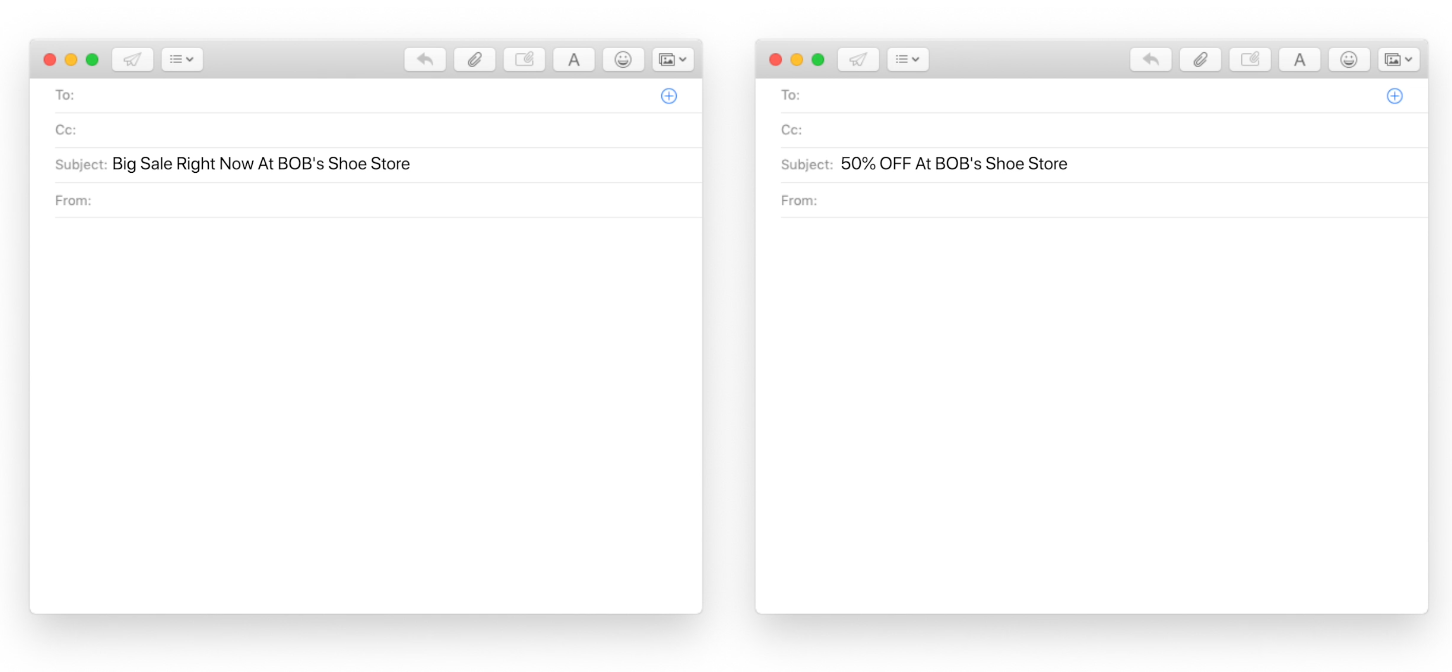
2. Educate
What’s the story? How will they benefit? Inform your audience.
If you’re writing a product promotion email, include:
What it does
How it works
Why it will benefit the reader
3. Edify
Wrap up your email with a strong call to action and get your subscribers to click. But make sure your CTA is clear and obvious.
Remember to:
Never put more than CTA inside your email.
Put the same link in the body of your email multiple times.
Don’t Skip: How to Build an Email List from the Ground Up
How to Write a Sales Email That Doesn’t Flop
Let’s start by looking at how you get your emails into the 25% pot and out of the 75% pot.
The best way to view this is similar to how we choose books to read.
Never judge a book by its cover, right? Let’s be real, we all do it!
And it’s the same with an email. Without a catchy subject line, it doesn’t matter what is inside your email, it will never get read. You need something that piques interest and gets that all-important double-click.
After the cover, you probably look at the author and the title. Next, you might read the summary on the back of the book, or you might flip open to the first page and see how it reads. You might heft the book, skip to the last page, check the page number, and estimate how long it’ll take you to finish.
Avid book readers might open Goodreads or Amazon to check ratings and reviews. They might check to see if they’ve read anything by the author before. Has the book made any well-known lists? Is it worth your time and energy?
Sounds like a lot of work, right?
Email recipients might not invest the same amount of minutes and passion into their inbox, but the principles still hold true. They’re going to look at a few essential elements and come to a surprisingly quick conclusion about whether they should open, ignore, or trash your email.
Here’s how you can improve your chances of getting opened:
Subject Line, Preheader Text, Sender, Date
Your recipients only see 4 things about every email in their inboxes (before opening):
Subject line
Preheader text
Sender
Date
That’s it. That’s all the real estate you have to work with. Here’s how to optimize for each element:
Subject Line
Your subject line is like the title of a book. It needs to be interesting enough to get your attention, but it can’t give everything away.
You can find plenty of data out there about whether to use ALL CAPS, emojis 😜, or exclamation marks, but what’s more critical is brevity and content.
Brevity: Emails with longer subject lines typically have lower open rates. Keep it short and sweet. The Hobbit performs better as a title than, say, A Tale of a Hobbit, Dwarves, and the Ring of Power.
Content: Answer the question of why your recipient should open your email instead of the other dozen unopened messages. You might include a compelling offer or a sense of urgency to help your message stand out.
Here’s an example of a sales email with a great subject line:
Subject Line: Note-takers, time to indulgeFrom: reMarkable
reMarkable speaks directly to their audience (note-takers) with a not-so-obvious offer. Anyone who loves to take notes will likely be enticed to open and see what all this indulging is about.
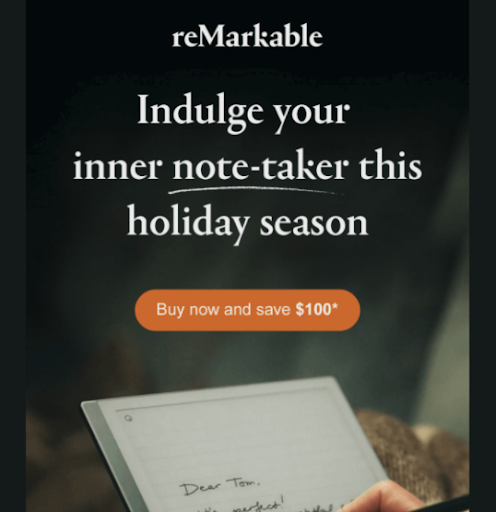
Preheader Text
Preheader text is the short line of characters you can see next to the subject line. You can often get away with 100 characters on desktop clients, but mobile apps tend to display much less. We recommend keeping it as short as possible.
![]()
Mountain Project does a great job in this example by building off their subject line with their preheader text. Not sure what onX Backcountry is? Well, it’s going to help you find your summit.
Sender
Twilio SendGrid’s Global Messaging Engagement Report finds that “a recognized sender is the most influential factor” when consumers decide to open an email. It’s more important than the subject line, offer, content, or time of day.
Choose a sender name that’ll resonate with your audience. Potential buyers might recognize your personal name better than your business name if you’re a freelancer or consultant.
A great sales email example of this in action is from Moosejaw.
![]()
Instead of just sending emails from the company’s name (Moosejaw), they often send them from Mike. People have an easier time connecting to a person than a brand, which is why it’s sometimes more powerful to use a name as your sender rather than a company.
Date
Send emails when your recipient is most likely to open them. Your goal is to be at the top of the inbox when they open their email account—not the bottom.
From the get-go, your recipient will choose the most important emails to open and read. After that, they’ll likely get bored (or run out of time) and begin deleting or ignoring emails (even if you’ve nailed other elements like the subject line, preheader text, and sender).
Learn more about your audience. Find out when they typically check (and open) emails. If you’re not using a free email tool (which we recommend), at least keep a log of when you tend to check emails.
Intro, Offer, Call to Action
Okay, you’ve managed to secure that all-important email open, but that’s not the end of the battle.
An open is similar to a book shopper pulling a title off the shelf. They haven’t started reading quite yet—they’re still just considering it.
Your goal isn’t just to get email opens. You want your recipients to open, read, click, and
Here’s how:
Intro
Offer
Call to Action
Intro
Make your emails personalized and skip straight to why it matters for them. Don’t start with:
“Hi, there. My name is Jessie James. I’m the founder at CoolNewTech, a startup that’s helping content marketers better manage their content. I’d love to chat about how our product can help you…”
Your recipient already sees the sender name, and they can also see your name (and tons more information) in your signature. Jump straight to the point.
“I just saw you hit 2 years at [company name]. Congratulations! I know you’re probably very busy, but I think I can help. It’ll just take a few minutes of your time, but our product will save your hours (every week). Shoot me an email to learn how it can help you specifically…”
Offer
Make your offer irresistible. 10% off usually isn’t worth your recipient’s time—neither is the best product ever. Recipients are inundated with these types of promises every day—your offer needs to stand out.
First, if you want your discount to get attention, you have to go big. Twilio SendGrid found that your offer needs to be at least 40% off to earn a click—anything less will likely be ignored or perceived as less legitimate.
Check out this sales email example from Quicken to see how to entice your audience with a last-chance (sense of urgency) big discount (40% off) offer.
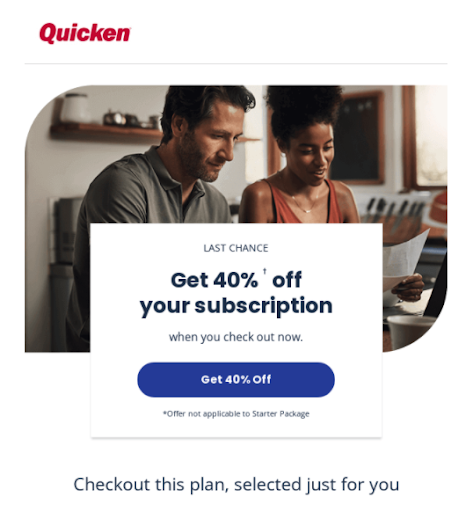
Call to Action
Tell your audience what to do with your email—don’t make them guess. Your call to action (CTA) will look different for every email, but ensure it’s strong, compelling, and unmissable:
Buy Now
Call Today
Book a Meeting
Subscribe to the Newsletter
Sign Up for an Account
Send Us an Email
Take the Survey
Make the point of your email obvious.
Only include a single CTA in your sales emails. Don’t ask your customers to sign up for an email newsletter and give you a call. Don’t ask them to register for an event and buy your new product.
Ask them to do one thing. Focus all your creativity, copy, and email design on getting your recipient to do that one thing.
Bold, underline, center-align, change the color—do whatever it takes to make your CTA stand out as the highlight of the email. Because, in the end, it doesn’t matter if you get your recipient to open, click, and read your entire email if they don’t take the single action you want them to take.
See how Airbnb does it in this sales email example?
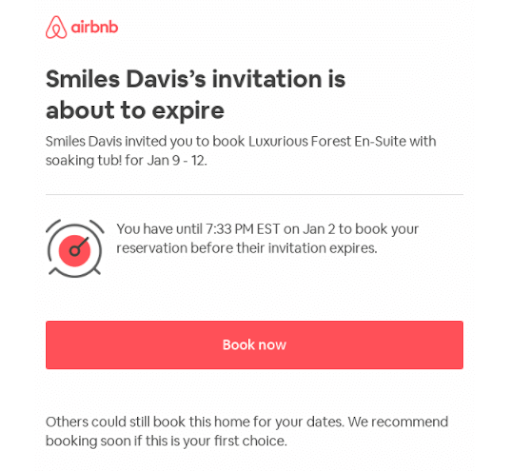
They kept it short and sweet, and they added a colorful button pushing the recipient to “Book now.”
Keep Learning: Learn How to Use Email Split Testing Like a Scientist
Improve Every Aspect of Your Sales Funnel
Congratulations—you now know how to write sales emails that don’t suck. However, your sales email is just one part of your funnel. You still need to improve your:
Facebook Ads
YouTube Ads
Ecommerce Strategies
Content Marketing
Copywriting
Instagram Marketing
Lucky for you, we’ve built a whole catalog of free exclusive classes that’ll teach you everything you need to know. Sign up for a class today, apply the lessons inside, and forever improve your sales funnel.
—
This article was updated with support from Graeme Whiles.








